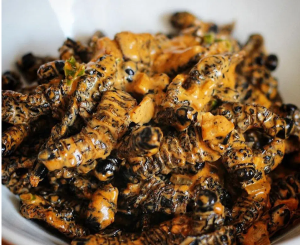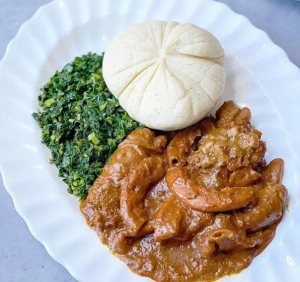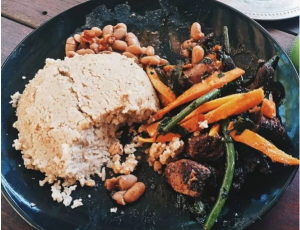Madora

The mopane worm is a kind of worm that is prized as a delicacy in Zimbabwe as well as in other African nations. Mopane trees, which are native to Matabeleland and other areas of the Midlands, are the best place to look for it.
The body of this worm is covered with spikes, and it may be either green or black and pale in color. After having all of its internal fluids squeezed out of it, the worm is left with just the yellowish fleshy section of its body. Mopane worms may be prepared for the pot in a number of different ways. Some of these methods include boiling them, just salting them, and drying them out in the sun.
The actual preparation takes about twenty minutes and consists of boiling the worms, allowing the water to drain off of them, and then leaving them to simmer in a little of oil with tomato, onion, and a combination of spices. When combined with sadza, a cereal prepared from crushed maize, they are incredibly delicious.
Sadza

This is the richly scrumptious product of Zimbabwe’s staple crop, maize.
First, the maize is milled into a cornmeal that has a powdery consistency. The next step in the process of making sadza involves bringing water to a boil, following that by combining it with a paste formed of cornmeal, and then allowing it to simmer for some time before ultimately adding more of the meal to make it thicker. The finished product is a piping hot and steaming mountain that goes well with beef or chicken stew as well as any green leafy vegetable on the side. In addition to that, it may be mixed with mopane worms. After finishing off the experience with a tall glass of ice cold water, you will feel an overwhelming sense of fulfillment.
Millet or rapoko meal may be used as an alternative ingredient to make sadza. The finished product is a dark brownish pap, sometimes known as porridge, which may be shaped and served with tripe, roasted pig, or any of the stews that are common in Zimbabwe, such as beef or chicken stew.
Mupunga Une Dovi

The majority of Zimbabwe’s ethnic groups traditionally enjoy a snack consisting of rice combined with peanut butter. To top it off, it’s even better when the rice comes straight from the farm, hasn’t been subjected to much processing, and retains all of its original qualities. Rice topped with peanut butter may be served with a beef or chicken stew, a vegetable, or just by itself for afternoon tea. It must be made dense while yet maintaining a moist texture and a flavorful seasoning.
Nhopi

Nhopi has long been connected with feelings of warmth and love since it is traditionally prepared by grandparents in rural regions during the school vacations for their grandkids. The pumpkin, after being peeled and boiled until cooked, is followed by the addition of a little milk and some peanut butter to give it a nutty flavor. The method is fairly straightforward. It provides a completely different connotation to the term “traditional” in Zimbabwe.




